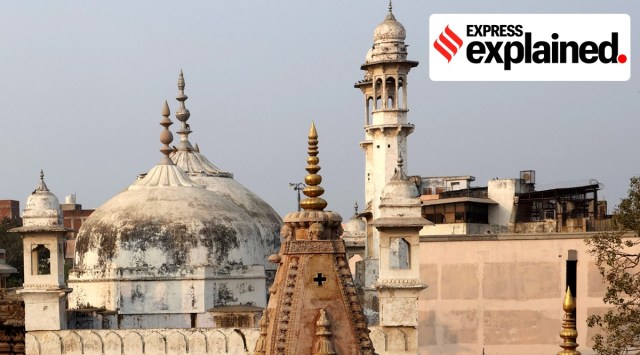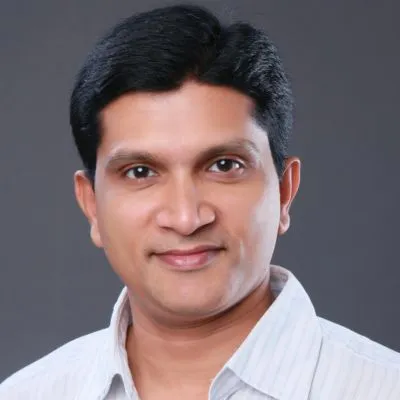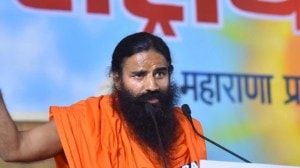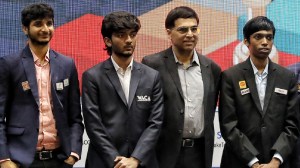- India
- International
Explained: What is the Places of Worship Act, and what are its provisions?
Today, the Supreme Court will hear an appeal against the video survey of Varanasi's Gyanvapi mosque. A Muslim body says the survey violates a law enacted by Parliament in 1991. What is this law, and what has the Supreme Court said about it earlier?
 The Gyanvapi mosque in Varanasi. In the foreground is the shikhar of the Kashi Vishwanath temple. (Renuka Puri/Archive)
The Gyanvapi mosque in Varanasi. In the foreground is the shikhar of the Kashi Vishwanath temple. (Renuka Puri/Archive)The Supreme Court will on Tuesday hear a challenge to the order of a civil court in Varanasi directing a videographic survey of the Maa Shringar Gauri Sthal in the Kashi Vishwanath temple-Gyanvapi mosque complex. The principal contention of the Committee of Management of Anjuman Intezamia Masjid, the organisation that has filed the appeal, is that the order of the Varanasi court — which was upheld by Allahabad High Court on April 21 — is “clearly interdicted” by The Places of Worship (Special Provisions) Act, 1991.
What is the Places of Worship Act, and what are its provisions?
The long title describes it as “An Act to prohibit conversion of any place of worship and to provide for the maintenance of the religious character of any place of worship as it existed on the 15th day of August, 1947, and for matters connected therewith or incidental thereto.”
Section 3 of the Act bars the conversion, in full or part, of a place of worship of any religious denomination into a place of worship of a different religious denomination — or even a different segment of the same religious denomination.
Section 4(1) declares that the religious character of a place of worship “shall continue to be the same as it existed” on August 15, 1947. Section 4(2) says any suit or legal proceeding with respect to the conversion of the religious character of any place of worship existing on August 15, 1947, pending before any court, shall abate — and no fresh suit or legal proceedings shall be instituted.
The proviso to this subsection saves suits, appeals and legal proceedings that are pending on the date of commencement of the Act, if they pertain to the conversion of the religious character of a place of worship after the cut-off date.

Section 5 stipulates that the Act shall not apply to the Ramjanmabhoomi-Babri Masjid case, and to any suit, appeal or proceeding relating to it.
At least two petitions challenging the Act — filed by Lucknow-based Vishwa Bhadra Pujari Purohit Mahasangh and some followers of Sanatan Vedic Religion, and BJP leader Ashwini Upadhyay — are pending before the Supreme Court. The law has been challenged on the ground that it bars judicial review, which is a basic feature of the Constitution, imposes an “arbitrary irrational retrospective cutoff date”, and abridges the right to religion of Hindus, Jains, Buddhists and Sikhs.
The court issued notice on Upadhyay’s petition in March 2021, but the Centre is yet to file its reply.
Under what circumstances was the 1991 law enacted, and how did the government justify it?
The Act was brought by the Congress government of Prime Minister P V Narasimha Rao at a time when the Ram temple movement was at its peak. The Babri Masjid was still standing, but L K Advani’s rath yatra, his arrest in Bihar, and the firing on kar sevaks in Uttar Pradesh had raised communal tensions.
Moving the Bill in Parliament, then Home Minister S B Chavan said: “It is considered necessary to adopt these measures in view of the controversies arising from time to time with regard to conversion of places of worship which tend to vitiate the communal atmosphere… Adoption of this Bill will effectively prevent any new controversies from arising in respect of conversion of any place of worship…”
What has the BJP said about the Places of Worship Act and the Kashi Vishwanath temple-Gyanvapi mosque dispute?
The main opposition BJP opposed the Bill. Then MP Uma Bharti said “maintenance of status quo as in 1947 in respect of religious places is like closing eyes similar to that of pigeons against advancement of cats. This…will mean preservation of tensions for the coming generations”. She referred to the Kashi Vishwanath temple-Gyanvapi mosque dispute: “Was not the intention of Aurangzeb behind leaving remnants of the temple (he destroyed) at the site of mosque, to keep reminding Hindus of their historical fate and to remind coming generations of Muslims of their past glory and power?”
During the movement for the Ram Temple in Ayodhya, the VHP-BJP often spoke of “liberating” the temples at Varanasi and Mathura as well. A popular slogan of the time was, “Ayodhya toh bas jhaanki hai, Kashi Mathura baaki hai (Ayodhya is just a preview, Kashi and Mathura are yet to come).”
After the Supreme Court’s unanimous 2019 verdict giving the disputed land in Ayodhya to Hindus, however, the RSS sought to distance itself from demands for similar movements in Varanasi and Mathura. Ayodhya was an “exception”, it said.
Responding to specific questions on the issue, RSS chief Mohan Bhagwat told reporters: “The Sangh is not associated with any movement, it is associated with human development. Because of a historical backdrop, the Sangh got associated with this (Ramjanmabhoomi) movement as an organisation. It is an exception. Now we will again be associated with human development and this movement will not remain of concern to us.”
What did the Supreme Court say about the Places of Worship Act in its Ayodhya judgment?
The constitutional validity of the 1991 Act was not under challenge, nor had it been examined before the Supreme Court Bench that heard the Ramjanmaboomi-Babri Masjid title suit. Even so, the court, while disagreeing with certain conclusions drawn by the Allahabad High Court about the Act, made specific observations in its support.
“In providing a guarantee for the preservation of the religious character of places of public worship as they existed on 15 August 1947 and against the conversion of places of public worship, Parliament determined that independence from colonial rule furnishes a constitutional basis for healing the injustices of the past by providing the confidence to every religious community that their places of worship will be preserved and that their character will not be altered,” the court said.
“The law addresses itself to the State as much as to every citizen of the nation… The State, has by enacting the law, enforced a constitutional commitment and operationalised its constitutional obligations to uphold the equality of all religions and secularism which is a part of the basic features of the Constitution. The Places of Worship Act imposes a non-derogable obligation towards enforcing our commitment to secularism under the Indian Constitution. The law is hence a legislative instrument designed to protect the secular features of the Indian polity, which is one of the basic features of the Constitution… The Places of Worship Act is…a legislative intervention which preserves non-retrogression as an essential feature of our secular values.”
Newsletter | Click to get the day’s best explainers in your inbox
More Explained
Must Read
EXPRESS OPINION
Apr 23: Latest News
- 01
- 02
- 03
- 04
- 05





































